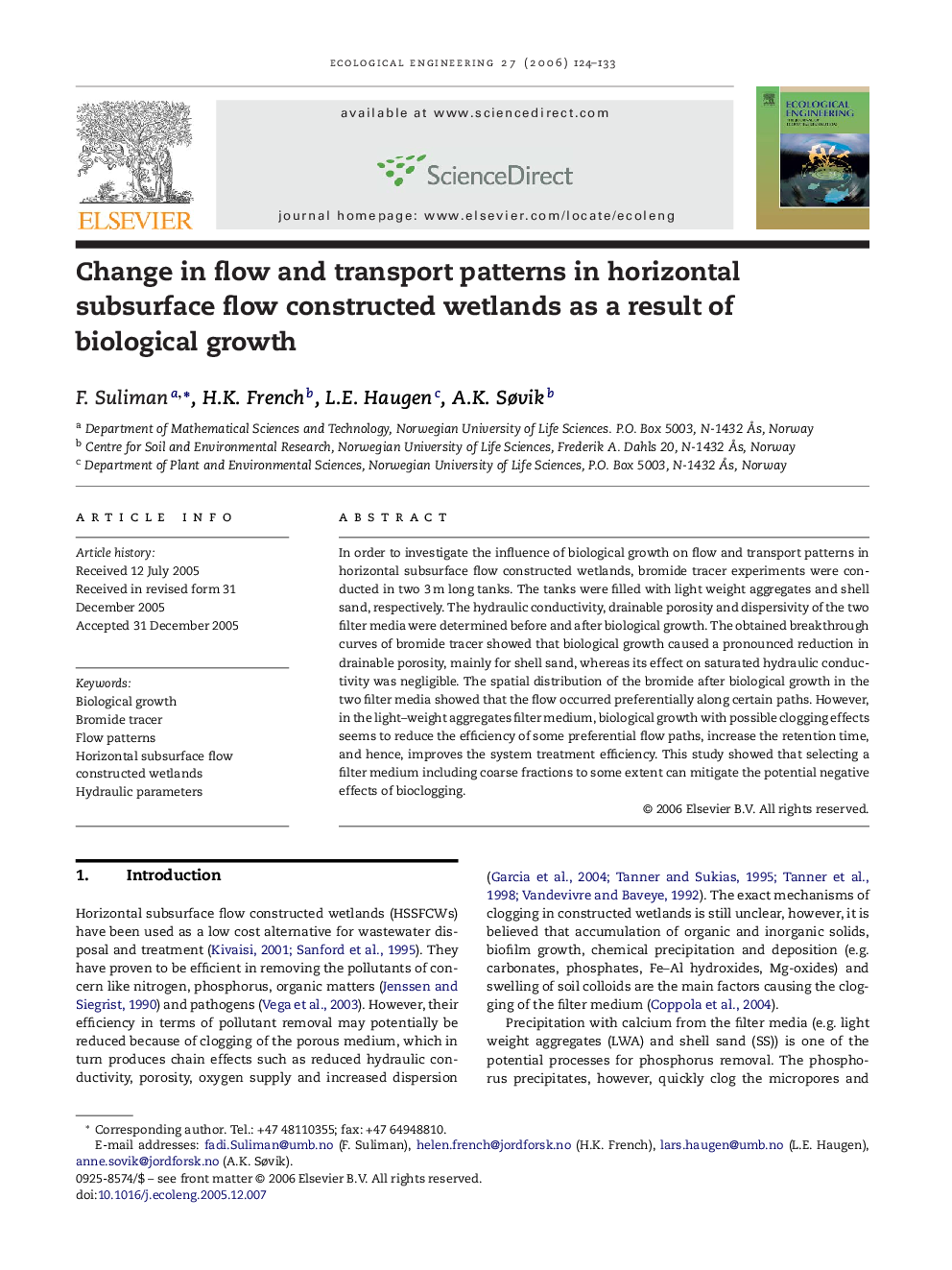| Article ID | Journal | Published Year | Pages | File Type |
|---|---|---|---|---|
| 4391267 | Ecological Engineering | 2006 | 10 Pages |
In order to investigate the influence of biological growth on flow and transport patterns in horizontal subsurface flow constructed wetlands, bromide tracer experiments were conducted in two 3 m long tanks. The tanks were filled with light weight aggregates and shell sand, respectively. The hydraulic conductivity, drainable porosity and dispersivity of the two filter media were determined before and after biological growth. The obtained breakthrough curves of bromide tracer showed that biological growth caused a pronounced reduction in drainable porosity, mainly for shell sand, whereas its effect on saturated hydraulic conductivity was negligible. The spatial distribution of the bromide after biological growth in the two filter media showed that the flow occurred preferentially along certain paths. However, in the light–weight aggregates filter medium, biological growth with possible clogging effects seems to reduce the efficiency of some preferential flow paths, increase the retention time, and hence, improves the system treatment efficiency. This study showed that selecting a filter medium including coarse fractions to some extent can mitigate the potential negative effects of bioclogging.
